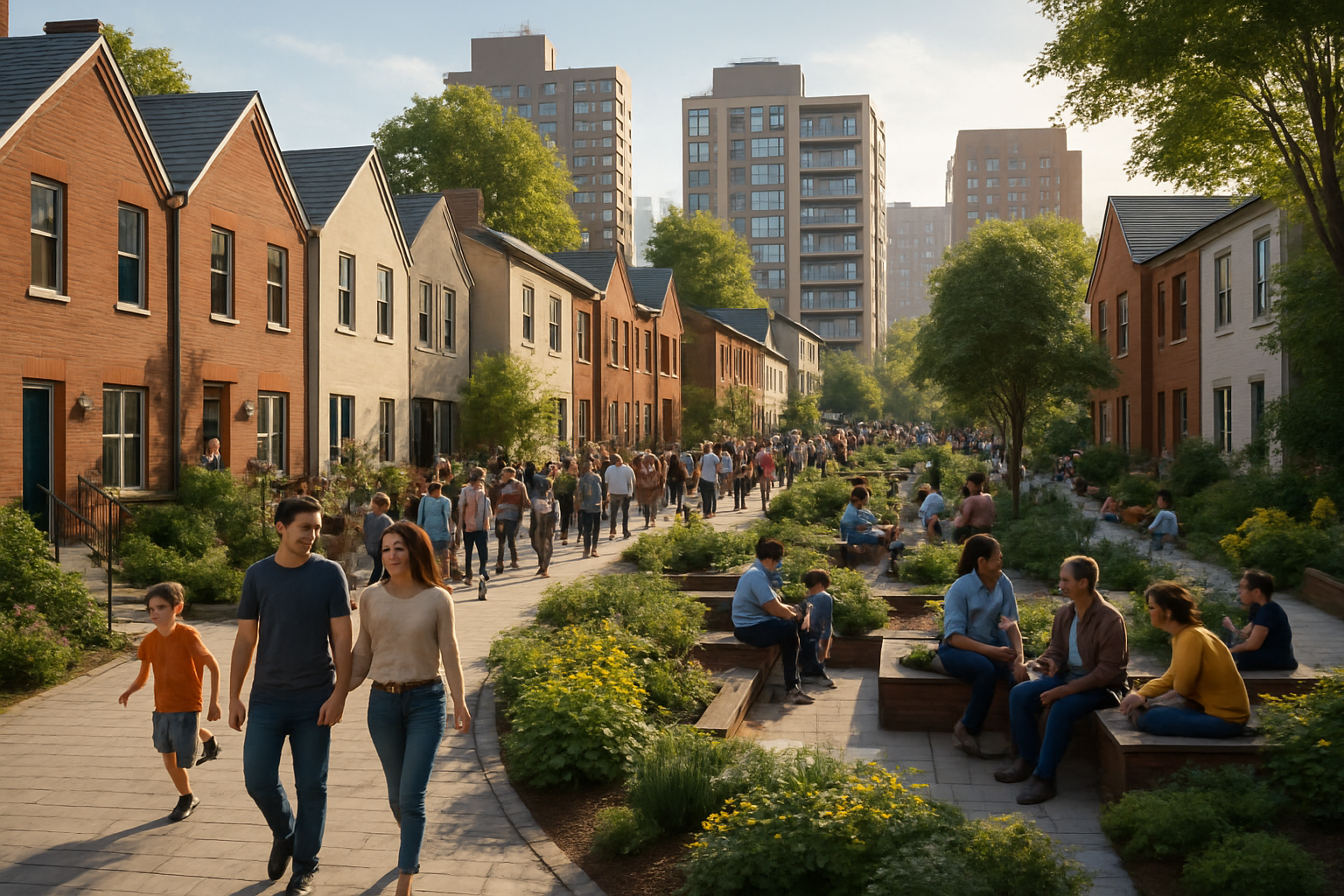Synergetic Urbanism: Reimagining City Life Through Collective Intelligence
Imagine a city where every decision, from urban planning to daily governance, is shaped by the collective wisdom of its inhabitants. Where technology and human insight merge to create living spaces that evolve with the needs of the community. This isn't a futuristic fantasy, but an emerging reality known as synergetic urbanism. Read below to explore how this innovative approach is transforming our understanding of city life and social cohesion.

The origins of synergetic urbanism can be traced back to the mid-20th century, with the work of systems theorist Buckminster Fuller and urbanist Jane Jacobs. Fuller’s concept of synergetics – the study of systems in transformation – provided a theoretical foundation, while Jacobs’ emphasis on community-driven urban planning laid the groundwork for participatory approaches to city design.
Harnessing Collective Intelligence in Urban Planning
At the heart of synergetic urbanism lies the principle of collective intelligence – the idea that groups of people working together can make better decisions than individuals acting alone. In the context of urban planning, this translates to a bottom-up approach where citizens are active participants in shaping their environment.
Digital platforms and civic tech initiatives have become crucial tools in facilitating this process. Cities like Barcelona and Helsinki have pioneered the use of participatory budgeting platforms, allowing residents to propose and vote on urban projects. These initiatives not only lead to more responsive urban solutions but also foster a sense of ownership and engagement among citizens.
The Role of Data in Synergetic Cities
Data plays a pivotal role in the synergetic urban model. Smart city technologies, from IoT sensors to AI-powered analytics, provide real-time insights into urban dynamics. This wealth of information enables city planners and residents alike to make informed decisions about everything from traffic management to energy consumption.
However, the synergetic approach goes beyond mere data collection. It emphasizes the importance of open data and collaborative analysis, encouraging citizens to engage with urban data and contribute their own insights. This democratization of data not only enhances transparency but also taps into the diverse expertise within the community.
Adaptive Infrastructure and Living Systems
Synergetic urbanism challenges the notion of cities as static entities, instead envisioning them as living, adaptive systems. This perspective translates into flexible urban design that can evolve with changing needs and environmental conditions.
One manifestation of this principle is the concept of adaptive infrastructure. From modular buildings that can be reconfigured based on changing demographics to smart grids that optimize energy distribution in real-time, adaptive infrastructure allows cities to respond dynamically to both short-term fluctuations and long-term trends.
Fostering Social Cohesion Through Urban Design
Perhaps the most profound impact of synergetic urbanism is its potential to strengthen social bonds and community resilience. By prioritizing shared spaces and collaborative decision-making, this approach creates opportunities for meaningful interaction and collective problem-solving.
Urban agriculture initiatives, community makerspaces, and co-living projects are just a few examples of how synergetic principles are being applied to foster social cohesion. These spaces serve not only practical purposes but also act as catalysts for community building and knowledge sharing.
Challenges and Future Directions
While the promise of synergetic urbanism is compelling, its implementation is not without challenges. Issues of digital divide, data privacy, and the potential for technocratic overreach must be carefully addressed. Moreover, transitioning from traditional top-down urban planning models to more collaborative approaches requires significant institutional and cultural shifts.
Despite these challenges, the momentum behind synergetic urbanism continues to grow. As cities around the world grapple with issues of sustainability, resilience, and social equity, the principles of collective intelligence and adaptive systems offer a powerful framework for addressing complex urban challenges.
Conclusion
Synergetic urbanism represents a bold reimagining of city life, one that harnesses the collective intelligence of communities to create more responsive, resilient, and socially cohesive urban environments. As we move further into the 21st century, this approach offers a promising path towards cities that are not just smart, but truly wise – capable of evolving and thriving in the face of unprecedented global challenges.





